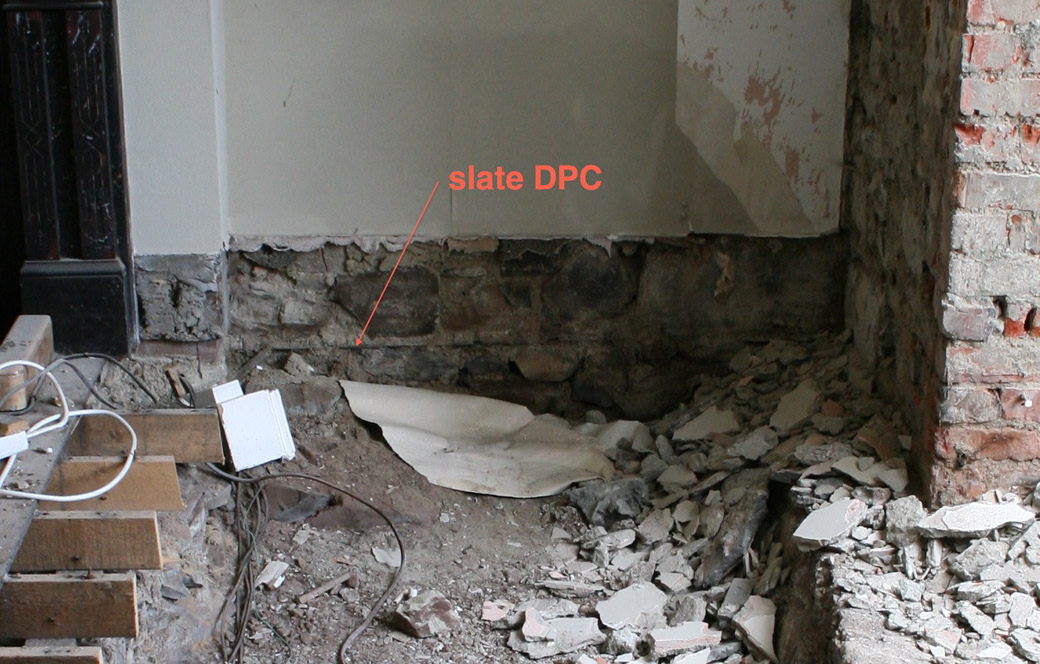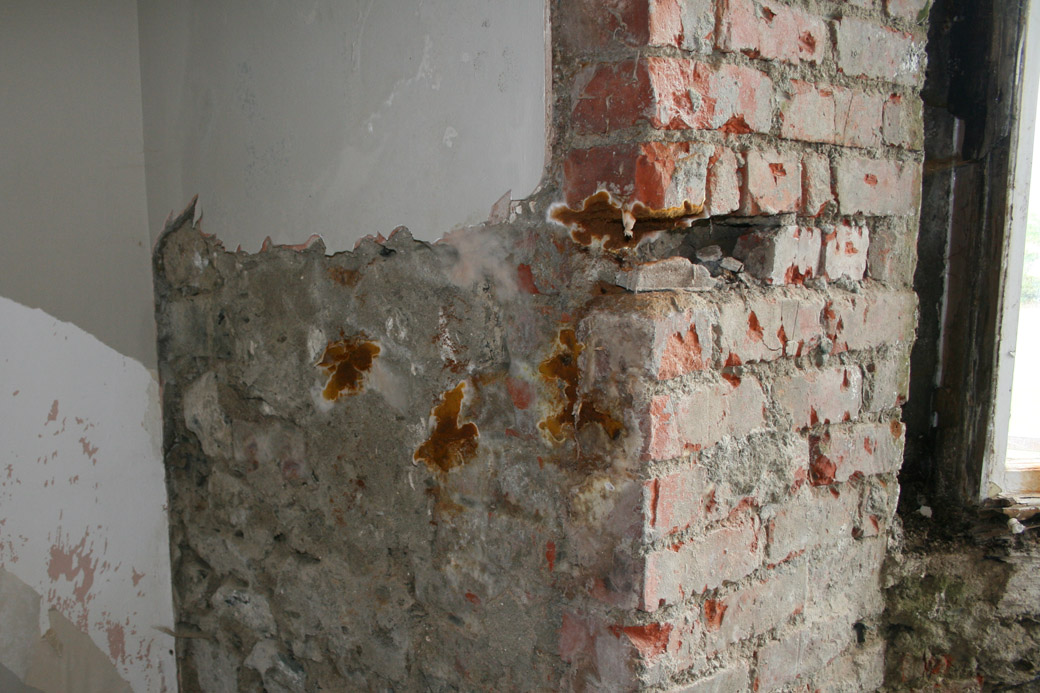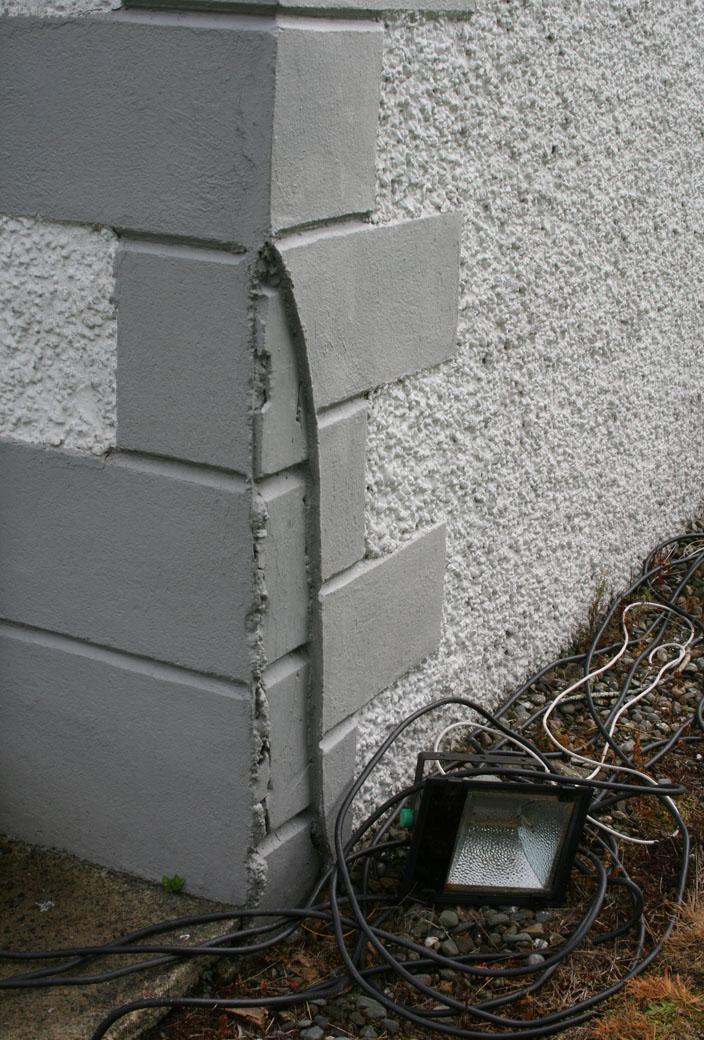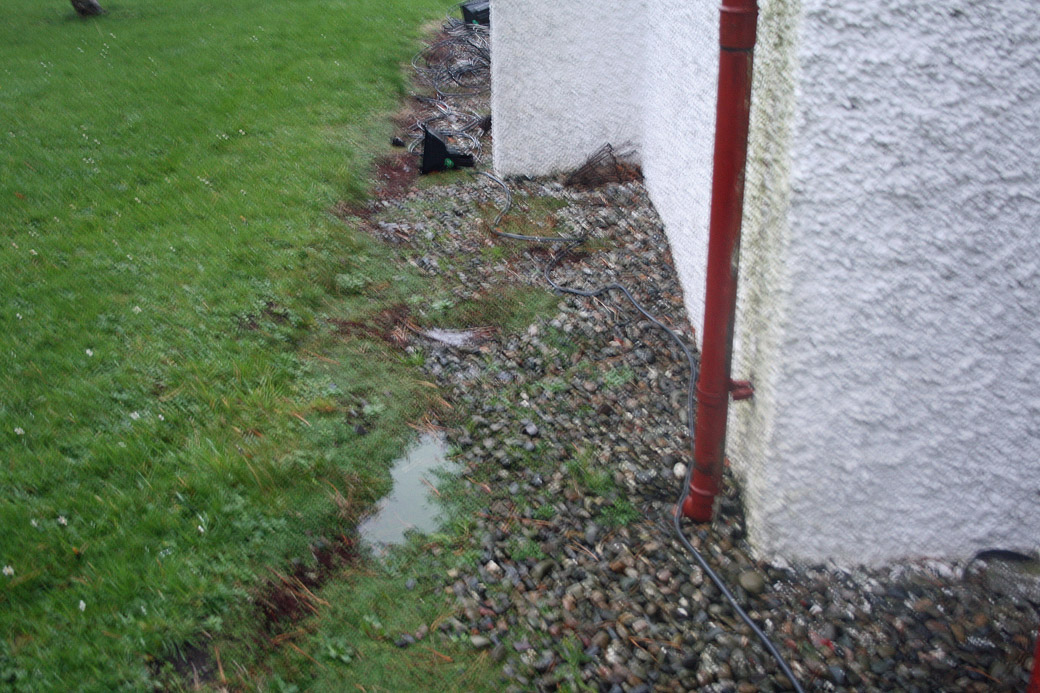conservation approach to dry rot treatment in historic buildings

We were asked to look into the cause of an outbreak of dry rot in an early 20th century farmhouse in Louth.
The case that dry rot fungus requires a moisture source to develop and that it can be treated by addressing the sources of moisture is explored in “Timber Decay in Buildings: The Conservation Approach to Treatment” by Brian Ridout which is an excellent reference book.
The sources of moisture that were identified on site were (see relevant photos):
- The rot also appears to be concentrated around the first floor level of the front façade and as such we consider that these areas are the principal source of moisture as the poorly weathered bay-window flat roofed areas are acting as “reservoirs” when the rainwater is unable to drain away through the restricted outlets which are frequently blocked.
- The ground is saturated around the house which is supplying moisture to the rising walls and subfloors caused by (a) The low-lying coastal site situated at the base of a range of hills, (b) Blocked/inadequate storm drainage (c) Inadequate land drainage around the house
- Blocked or broken rainwater goods suppling moisture to walls
- The house has been over-rendered with a hard cement render coating over the original rendering which is inhibiting the ability of the walls to evaporate moisture absorbed by rising damp and would thus be contributing to capillary action/rising damp within the walls compared with a breathable lime render.
- Although a slate DPC was identified at ground floor level in the walls of the original front section of the house, rising damp was noted where ground levels are higher than DPC level.
- Underfloor ventilation to the suspended timber floors to the front part of the house appears insufficient – existing vents should be opened up to ensure a clear passage of air through the underfloor voids to avoid high relative humidity levels in these areas.
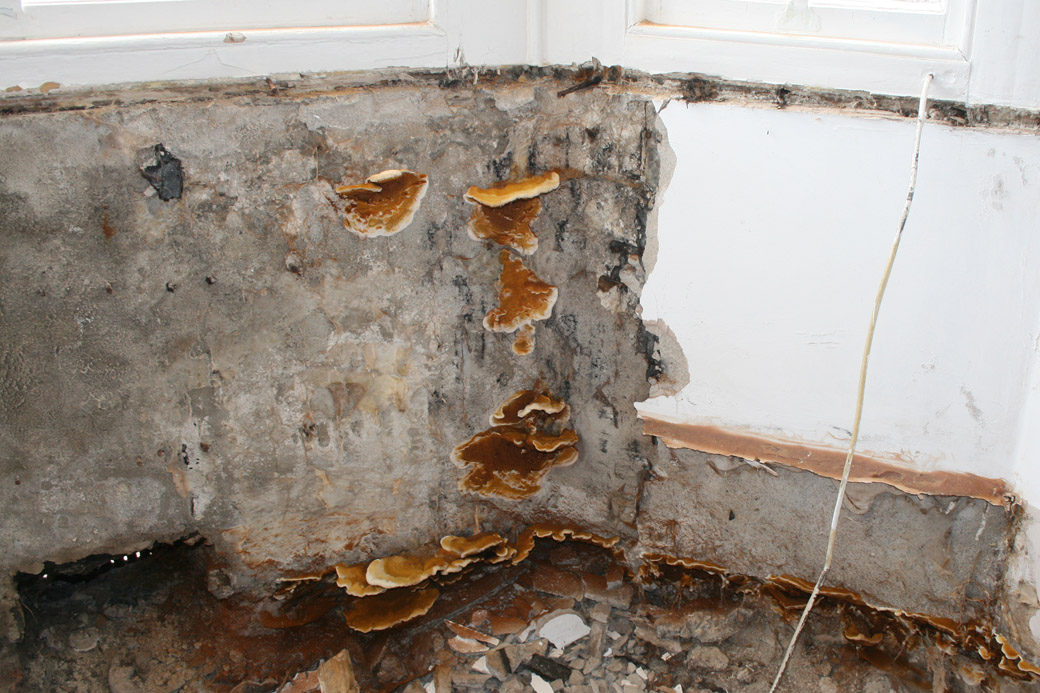
The following works are proposed to address the dry rot infestation (affected floor timbers had already been removed at ground floor level)
- Re-plaster walls to affected internal areas with an hydraulic lime plaster to allow moisture diffusion from the walls.
- New timber joists are to be isolated from the front external wall by (a) detailing the timber floor in such as way that it is not in contact with the wall (b) treating the new timbers to discourage future dry rot attack and (c) isolating the timbers from masonry with DPCs where relevant.
- Alter the roof detail around the bay windows to provide a flat roofed lead capping and flashing
- Open up underfloor ventilation paths at ground floor level.
- Investigate/repair rainwater gulleys around the house to direct rainwater away from the house and rising walls. If gulleys are discharging water directly to the ground, the rainwater can be diverted to the new land drainage pipework.
- Introduce land drainage to lower the water table locally around the house and reduce capillary water pressure on walls.
- Clean/repair rainwater goods as necessary.
- Ground levels around the side of the house that are higher than DPC level will be naturally lowered for the construction of a proposed extension.

